Winter Mountain Leader Training Q&A
At the end of last year, we held an online Q&A for you to ask Senior Instructor Derek Bain and Mountain Training Scotland’s Executive Officer George McEwan questions about the training element of the Winter Mountain Leader Award. If you didn’t make it along, we’ve collated some of their answers to the questions that were asked to help you understand what to anticipate and how to prepare for your Winter ML Training this season.
What should I expect the Winter ML Training to be like?
We’ll start with thinking about what the WML is; a leadership award for hill walking contexts. It’s similar in structure and expectation to the Mountain Leader, and the leadership element builds on the experience you’ll have gained since qualifying as a summer ML. But it also introduces the challenges of the winter environment, and the aspects of this that affect your role as a leader.
The Winter ML Training will cover personal skills (movement, crampons, navigation, etc.), emergency procedures, planning a day appropriate for your group, elements of how to introduce skills to your group that allow them to achieve the walk you’ve planned for them.
.
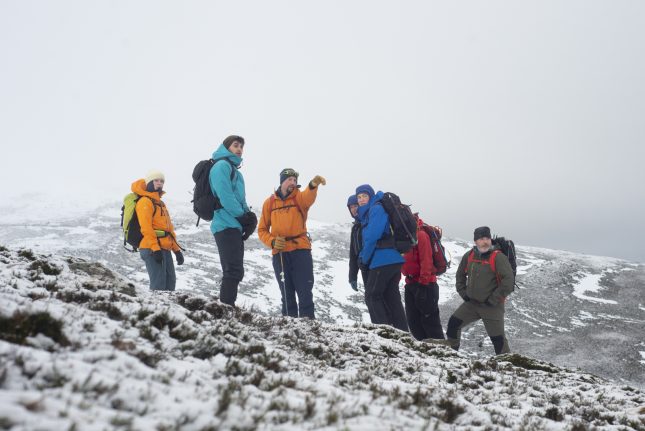
.
The award is parallel to the summer ML, and the greater variety of challenges in winter and variability of conditions mean those delivering courses will have more agility in how it is run in order to cover the syllabus. Every Winter ML Training can be unique but should nonetheless cover the essential elements found in the Winter ML Candidate Handbook.
What is the biggest downfall you see in terms of quality mountain days?
Key here is looking at what a Quality Mountain Day (QMD) is; these should be the cream of your days out. There is a set of criteria that should be fulfilled for something to qualify as a QMD, and the easiest way to ensure it’s a QMD is to map your day against the criteria. When inputting these to DLOG, try to evidence each bullet point criteria; the more bullet points you can evidence, the more likely it is to be a QMD.
People will have ‘winter days out’ that they automatically label as QMDs, but they don’t necessarily meet these criteria. The minimum requirement of 40 QMDs means that you might have been out on plenty more days out than that which didn’t qualify, but they’re still worth logging to help build a bigger picture of your wider experience.
Would a day out winter climbing count as a QMD? (assuming it involves elements of navigation and winter skills, along with meeting time requirements etc.)
A useful way to think about this is; if you took the climb out of your day does it still look like a QMD? Ultimately the award is about winter walking, so this needs to be a part of the day that involved a considerable degree of thought and effort. That being said, winter climbing days with less substantial walking elements might still be worth logging to demonstrate the breadth of your experience in winter. Provided you have enough other days that do meet the QMD criteria!
Top tips for Winter ML training?
You need to have current/recent experience of walking in the mountains in winter; this can be difficult if you don’t live near them, so the next best thing is to have good fitness (especially general hill fitness). The ideal is to get out and spend a good week or so in the Scottish Highlands having big hill days!
.
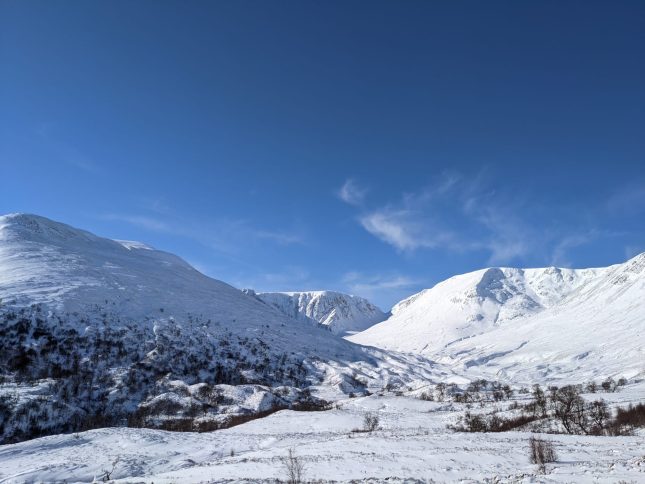
.
What level of experience, confidence, and skills should I be before attending training?
Experience – the minimum required for WML training is 20 QMDs. It definitely helps to have more, and if more of them are in Scotland as you’re more likely to have experienced a variety of winter conditions and snowpacks compared with the typically fleeting snow experienced elsewhere in the UK.
Confidence – this is personal and varies between all of us, but it’s important to know that on the training course the Instructors will try to build your confidence. The aim should be to arrive for training with confidence in your fitness and health, ready to receive and learn.
Skill – the intention of the 20 QMD pre-requisite is that you will have gained personal skills, particularly in hard skills like walking in crampons. There are other areas you may be aware of but are less likely to have yet developed your expertise in such as avalanche hazard, but this will be covered on the course.
.
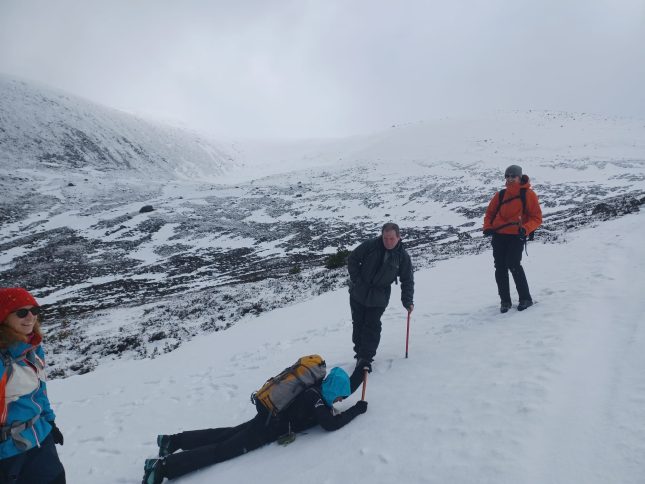
.
What are your top day out suggestions WML trainees in Scotland?
A top day out is one you’ve taken time to plan! Calibrate the level of challenge for you and your group, then go and do it while making good decisions and applying technique effectively.
Specifically, maximising the conditions is a key part of the process of being a Winter ML as snow conditions are so significant in determining what a day might look like. Take for instance, An Teallach, which can be straightforward or absolutely nails depending on the conditions present. Conditions are so critical in winter, which makes the planning process all the more important. Scotland’s mountains can offer great journeys, but factoring in the conditions to your planning and decision-making is absolutely key for having a top day out.
How does navigation compare to the Summer Mountain Leader?
This depends! It can be quite ‘summery’ in January and February, so the challenge level of navigation can range a lot. You have to be prepared for the worst conditions that winter can present for navigation; think about paths and rivers being obscured, avalanche hazards, potential white out conditions.
In a white out, you can’t see the ground at all, and there are no boulders or contrast between the ground and sky. In this context, you’re entirely reliant on your instruments for orientation; using your compass, measuring distance and timing, judging slope angles, etc. These are very difficult winter conditions to deal with but are relatively rare. You can still get good winter conditions without a white out, which require challenging navigation and much more so compared to summer.
.
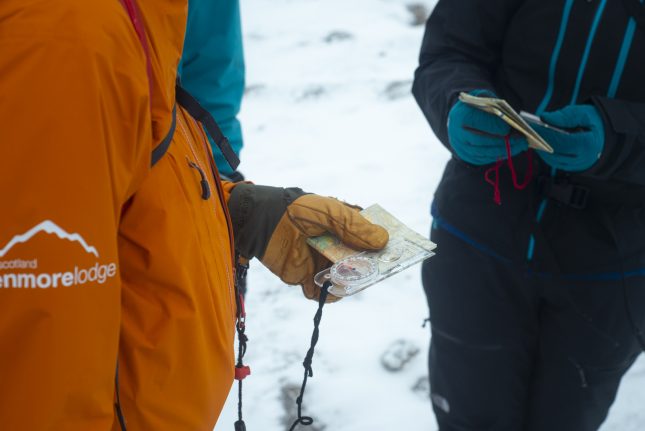
.
The impact of winter conditions and the challenges of navigation also impact on your role as leader. In summer you can have a relatively relaxed approach to planning at the beginning of a navigation journey (taking time, look at map, get bearings, plan leg, off you go), and at the end of a leg you have more feedback on where you are and whether you’ve reached your destination. In winter, you don’t have the luxury of being able to hang around, and the expectations on you as a leader are higher.
An element of flow and efficiency to the journey is required, where navigation isn’t interfering with group pace (due to the risk of getting cold). At the end of a leg, in poor visibility there is little feedback on where you are. To firmly establish where you are, perhaps using slope aspect or judging the feeling of having gone up or downhill, is difficult. As a Winter Mountain Leader, you would need to be able to have confidence you’re in the right place, and move onto the next journey leg.
There’s more to juggle as a Winter Mountain Leader when navigating; communicating with your group, managing underfoot conditions, and situational awareness when following a compass bearing. This can all be really challenging if you haven’t got the mileage in and the experience to know your skills are up to it.
Why do people fail at assessment?
Failing an assessment is quite involved, and being deferred is the more common reason folks don’t get through the award first time. Generally if someone has been deferred, they’re competent but have an area of weakness they need to develop.
Looking at the stats for the 2022/23 season, the most common element that prevented people from passing is navigation. The main syllabus point cited is 7.3 (relating map to ground and vice versa); this is an important summer skill but relating contour information from the ground to your map is more crucial in winter when you generally have less information. This is often matched by a lack of experience navigating in certain conditions in the QMDs of those who were failed or deferred on this point. This is a clear indicator of how experience impacts on practical performance.
.
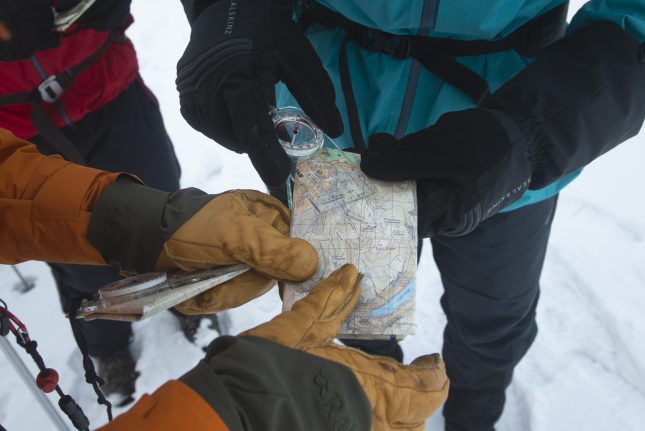
.
Another area some have been challenged by is demonstrating belaying skills in steep ground, particularly creating snow anchors in a range of conditions (8.7.4). It’s important to have a range of experience in a range of conditions. The volatility and variability of winter conditions means your experience needs to be broader. A fail requires two or more major syllabus items – everyone has done the Summer ML award, so your knowledge of equipment, leadership expectations, skills etc. should all translate fairly well. This, plus sufficient winter experience, means something has to have gone wrong for a candidate to fail.
Post-training, a valuable thing to have around you is a good support network. Operate with peers, get feedback, and build up your experience. Ultimately, candidates fail due to lack of preparation, perhaps because they don’t get feedback from peers or tend to operate in isolation. Having a good network around you is useful for self-awareness about where you are in relation to the standard.
I’m considering working towards my Winter ML but I’m quite worried about the impact of climate change on winters in the UK and what this might mean! What are your views on this?
Anecdotally, many of us have noticed weather systems becoming more dynamic in winter, with the timings becoming less reliable. This has meant swings in conditions are more frequent and more extreme, resulting in conditions going from their most challenging to benign very quickly, and these changes happening more frequently. This is largely backed up by scientific data, and there are indeed models predicting reduced snow cover in the UK over the decades to come as the effects of climate change become more strongly felt here.
However the challenges of winter are still here; the UK’s hills and mountains still experience winter conditions that require Winter Mountain Leaders to be prepared. When it isn’t ‘wintry’, a mild, wet, slushy mountain can be just as hazardous as a cold, dry one. Being a winter ML requires being resourceful and adapting to the conditions; this applies to the award as well! Our picture of what winter was 20 years ago isn’t relevant, the award is concerned about the now. Providers can adapt to changes in conditions and cover the syllabus in a way that is relevant to the conditions faced.
.
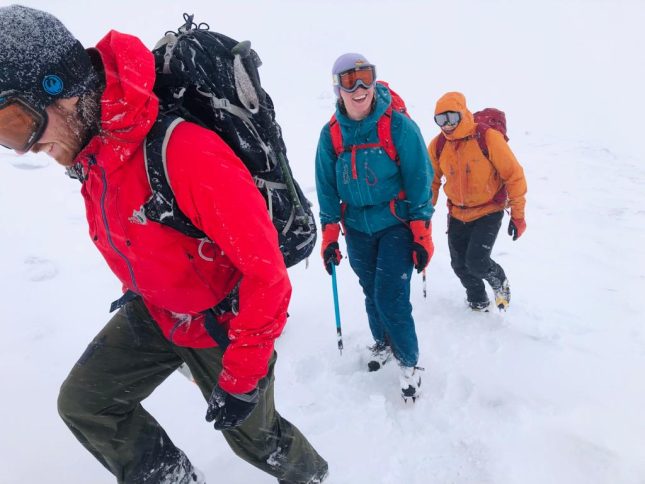
.
What resources or courses are there, or general advice you can give for WML Training prep?
A good start is the Winter ML Candidate Handbook which contains the syllabus competencies and has some good links in the appendices. The Winter Skills book from Mountain Training is the official handbook of the award. These official sources are a safe bet! Beyond that, the SAFOS e-learning module for avalanche awareness is also very useful.
There’s no requirement to do courses but some might find it useful for certain skills in the syllabus that can be slower and harder to develop, such as navigation or avalanche hazards. Otherwise, the 20 QMDs should square away your skills. If you a member of the Mountain Training Association, there are workshops, CPD (continual professional development) opportunities, forum groups, etc. Peer to peer groups are useful for feedback, but there is less audit of content quality in these settings.
Can you recommend 3 winter walking routes in Scotland for developing winter hill walking/a beginner mountain walker?
Prior to Winter ML training, competence as a winter walker and mountaineer is assumed. It is always difficult to recommend individual walks because of how varied conditions in winter can be; on any given day a route might be friendly and ideal for a developing walker, but the next it could be totally inappropriate.
Within Scotland, try to visit different areas. The central Highlands have big Munros but also smaller ones. The Cairngorms are likely to give you more sustained poor visibility. Or Torridon has unbelievably good big mountain routes but might be inappropriate for someone less experienced, though it also has other options if you need to dial back the challenge level.
.
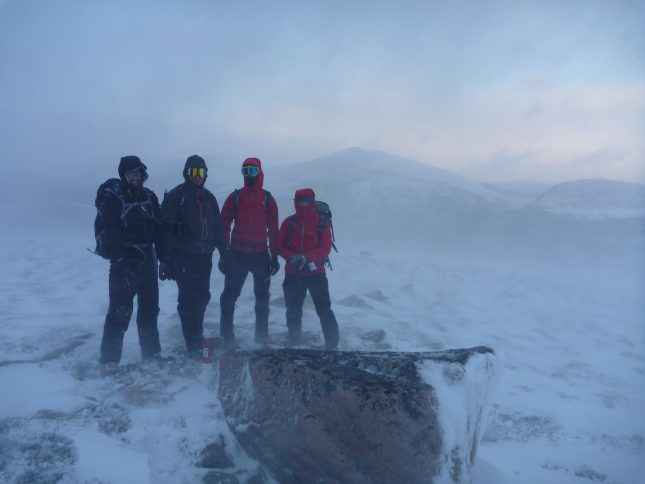
.
Go to different areas, and use the forecast and conditions to choose an appropriate route. Make the routes you choose progressive as well, scaling up the challenge as you develop your skills and confidence. If you have something big in mind, find similar terrain that is less committing. Fiacciall Ridge on Cairngorm is useful for varying challenge, and it’s easy to turn around or make easier as needed. For developing those skills, it doesn’t have to be a ridge line; you can use broken terrain, start low and continually consider your exit options. And it’s worth remembering that you don’t have to complete a route to gain or learn from an experience!
If you were at the earlier stages of developing your experience in winter mountaineering, what advice would you give and what would be on your agenda?
The things that are harder to develop in personal skills are winter navigation and avalanche hazard awareness/avoidance, so when looking to develop those I would try to seek out progressive challenges in that area.
Thinking about mountaineering specifically, don’t forget the start and end of the day! Getting to and from mountaineering terrain will involve navigation. Steeper areas will take you into terrain where you can expect avalanche hazard as well, so your knowledge and understanding of this needs to be higher.
What is a big lesson you have learned about operating in the hills in winter?
How many big lessons has winter taught? Certainly too many to mention them all! To choose one, it’d be keeping your head up and situational awareness. Because of time spent observing other people operating in the hills, this is something I’ve come to notice the importance of. A lot of people walk with their head down; it’s often nice to look around when in the hills given the stunning views, but it’s also important to pay attention to everything around you. What’s the snowpack doing, is the weather as you expected it to be, how are your group doing? There are definitely occasions we’ve been temporarily misplaced when out chatting with friends, and not paying attention to our surroundings
Another way of thinking about this is being honest! Be honest with yourself about where you are; if you’re not confident about that, ask yourself why? Be honest about your comfort zone, and what the margin for error is in any given context. In summer, the environment is more forgiving of mistakes; it’s easier to adapt and get away with it. In winter, you often get the lesson before you realise you’re in the classroom! Listen to your internal voice; if you’re nervous, voice it with other people and discuss things openly and honestly.